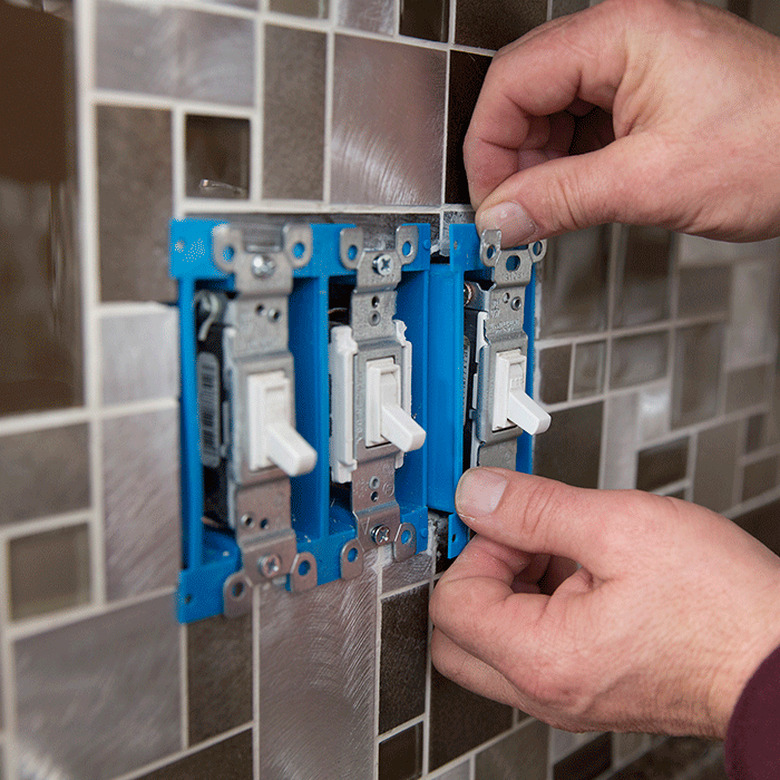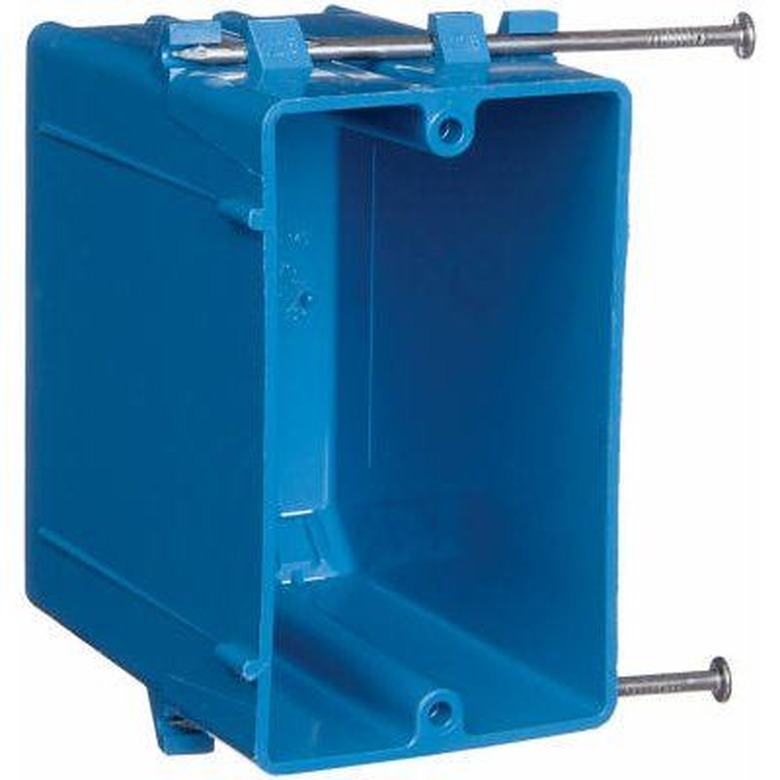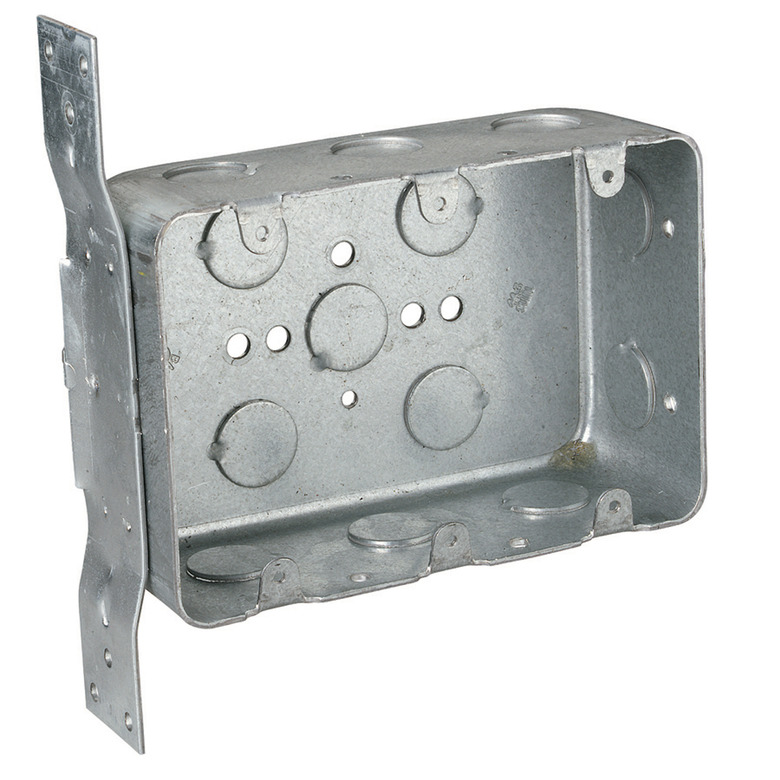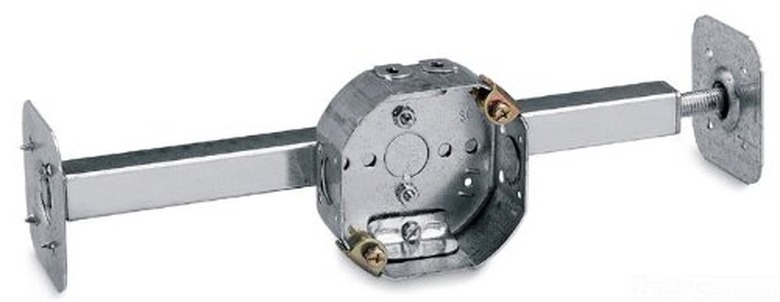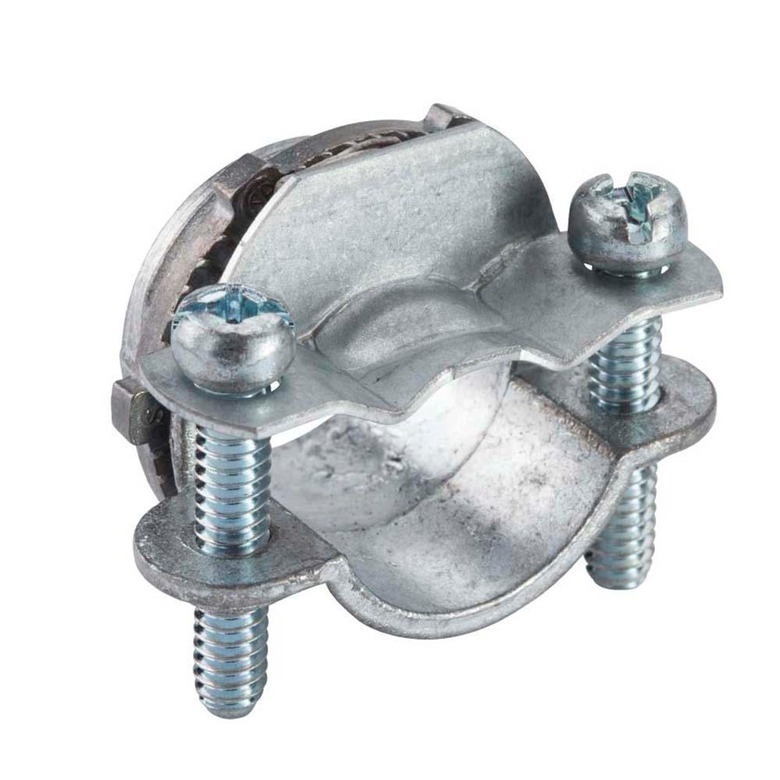A Homeowner's Guide To Electrical Boxes
Electrical boxes are required for most electrical installations around the house. Boxes have two very important jobs: they provide means for securely mounting electrical cables and devices (outlets, switches, light fixtures, etc.) in walls and ceilings, and they enclose the wiring connections to protect neighboring materials and people from the electricity. Electrical boxes come in metal and plastic and in a wide range of shapes and sizes. Choosing the right size is important because it's unsafe—and illegal—to cram too many wires and devices into a box.
Electrical Box Materials
Electrical Box Materials
Both plastic and metal electrical boxes are suitable for most household projects. They can be used interchangeably in many cases, but there are rules to be aware of. Plastic boxes, technically called nonmetallic, are inexpensive and do not require grounding. Several different types of plastic are used for electrical boxes, and they may be blue, black, grey, or beige in color. Many come with preattached nails for quick fastening to wood framing. The main rule to remember with plastic boxes is that they cannot be used with metal conduit or armored (metal) cable. There are special plastic boxes for use with PVC conduit.
Metal boxes can be used with metal conduit and armored cable. They typically include mounting tabs or brackets, or they simply have holes in the back and sides of the box for mounting to framing with screws. The rule to remember about metal boxes is that they must be connected to the ground system of the circuit. Usually this involves adding a pigtail (a short length of wire; in this case, a ground wire) that connects to the box with a screw and is joined to the circuit ground wire(s) with a wire connector. Most metal boxes are made of galvanized steel, but outdoor boxes may be aluminum.
Standard Types of Electrical Boxes
Standard Types of Electrical Boxes
Standard electrical boxes are designed for indoor use in dry locations. They come in several shapes and comprise the great majority of boxes in a household wiring system.
- Rectangular boxes are used for installing most wall switches and outlets (receptacles) where only a single device is used.
- Square boxes are used as junction boxes (for splicing multiple wires or cables) and for single or double devices. Square boxes with mounting holes for two devices are also called double-gang boxes. Square boxes offer more room for wiring connections than rectangular boxes.
- Octagon boxes typically are used for ceiling- or wall-mounted light fixtures and smoke alarms. The fixtures usually mount directly to the box (with no additional box cover). These boxes are not true octagons—their shape is basically a square with angled corners, a shape which fits the round bases of most light fixtures.
- Round boxes are used in the same applications as octagonal boxes. Round boxes are often labeled as "ceiling boxes" and are suitable for lightweight fixtures only. They should not be used for ceiling fans or heavy light fixtures. Some round and octagon boxes have metal bars, called braces, for mounting the box between ceiling joists or wall studs.
- Multi-gang boxes are the same height as rectangular and square boxes but can accommodate anywhere from two to seven switches (or outlets, as appropriate). They are often named for the number of devices they can hold: 3-gang, 4-gang, 7-gang, etc.
Specialty Electrical Boxes
Specialty Electrical Boxes
Some electrical jobs call for specific specialty boxes. They should be used whenever the job calls for it—never use a standard box as a substitute for the required specialty box.
- Ceiling fan: Heavy-duty metal or plastic box designed for the weight and motion of a ceiling fan. Some include mounting bars for installation between ceiling joists.
- Outdoor: Weather-proof plastic or metal box designed for surface-mounting outlets and light fixtures.
- Gangable: Indoor box that can be extended sideways—by adding additional gangable boxes—to accommodate more devices or wiring.
- Old-work box: Rectangular or round indoor box with tabs or brackets that secure the box to the backside of drywall instead of the framing; also called remodel or retrofit boxes.
- Pancake box: Shallow (about 1/2 inch deep) round box for mounting to the surface of drywall or setting into a single layer of drywall.
What Size of Box Do You Need?
What Size of Box Do You Need?
The National Electrical Code (NEC) and local building codes restrict the number of wires, devices and fittings that are allowed inside electrical boxes, generally referred to as "box fill." Wires create heat, and an overcrowded box can become dangerously hot. As a general rule, bigger boxes are better than smaller boxes, and you can't go wrong by choosing a larger size of box, provided it will fit your application.
Box fill limits are based on the number, type and size of conductors (wires) as well as the number of devices and fittings (such as cable clamps). For calculating box fill, each element in the box is assigned a conductor count. When a box contains devices, each device is counted as two conductors. Cable or conduit clamps inside the box are counted as one-half or one conductor each, depending on the type. Each "hot" and neutral wire is counted as one conductor, while all ground wires together are counted as a single conductor.
As an example, if a box has one switch that is wired to two cables, and there are no internal cable clamps, the box fill count is 7 conductors:
- One switch = 2 conductors
- Two hot wires = 2 conductors
- Two neutral wires = 2 conductors
- Two ground wires = 1 conductor
- Total box fill = 7 conductors
Standard household circuits are either 15-amp or 20-amp and have 14-gauge (14 AWG) and 12-gauge (12 AWG) conductors, respectively; 12 AWG is larger than 14 AWG, so a box can have fewer 12 AWG conductors than 14 AWG. Here are the maximum box fill limits for a few common sizes of electrical boxes:
For junction boxes (without devices):
- 4 x 1 1/2-inch round or octagon: 7 (14 AWG) or 6 (12 AWG) conductors
- 4 x 2 1/8-inch round or octagon: 10 (14 AWG) or 9 (12 AWG) conductors
- 4 x 1 1/2-inch square: 10 (14 AWG) or 9 (12 AWG) conductors
- 4 x 2 1/8-inch square: 15 (14 AWG) or 13 (12AWG) conductors
For boxes with devices (all rectangular):
- 3 x 2 x 2-inch: 5 (14 AWG) or 4 (12AWG) conductors
- 3 x 2 x 3 1/2-inch: 9 (14 AWG) or 8 (12AWG) conductors
- 4 x 2 1/8 x 1 1/2-inch: 5 (14AWG) or 4 (12 AWG) conductors
- 4 x 2 1/8 x 2 1/8-inch: 7 (14AWG) or 6 (12 AWG) conductors
Don't Forget Clamps and Covers
Electrical cables typically must be secured to boxes with approved cable clamps. Many boxes have internal clamps already present, but if a box has no means for clamping, you must use a clamp that mounts to the box through one of the "knockout" holes in the box. There are standard metal clamps and push-in plastic clamps. Make sure any clamps you buy are compatible with your electrical boxes.
Boxes also must have their own covers if they are not covered by fixtures. Never leave an electrical box open, without a cover. There are standard covers available for boxes with switches and outlets, as well as blank covers for junction boxes. Outdoor boxes get special covers with rubber gaskets to keep out moisture.
